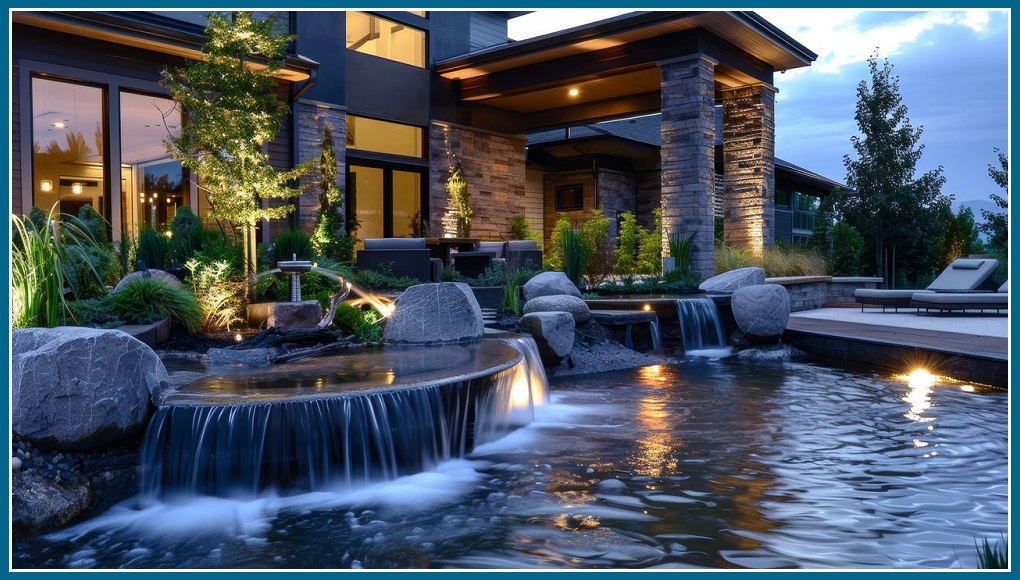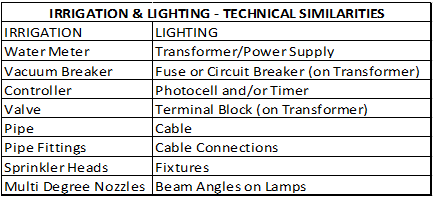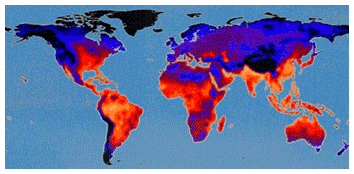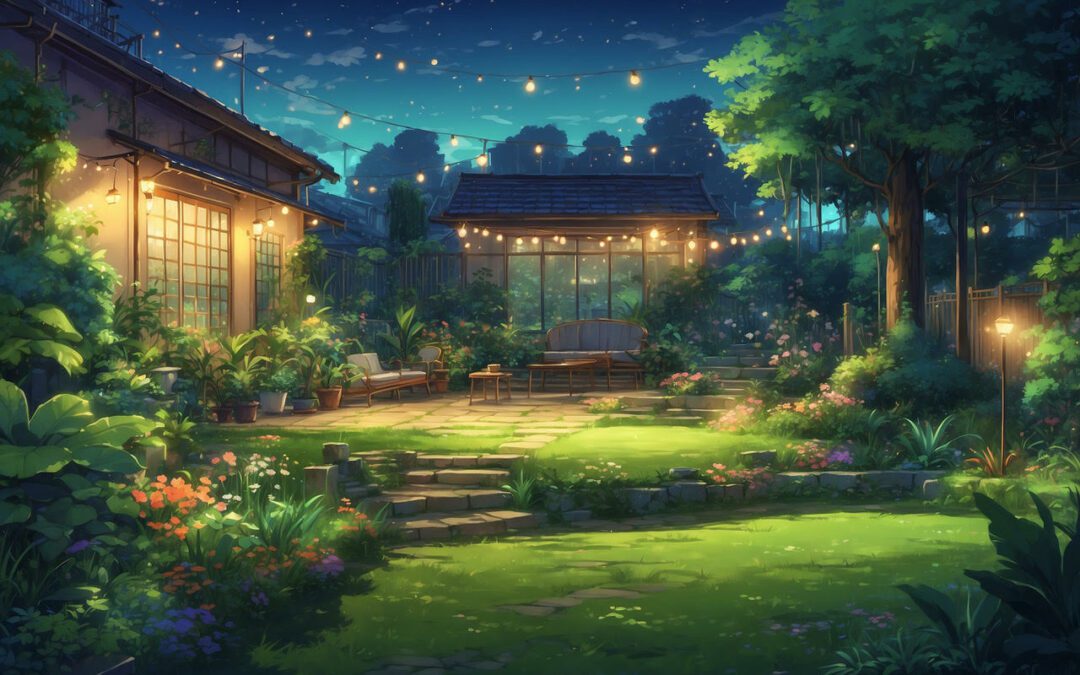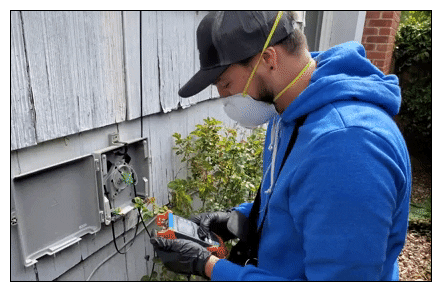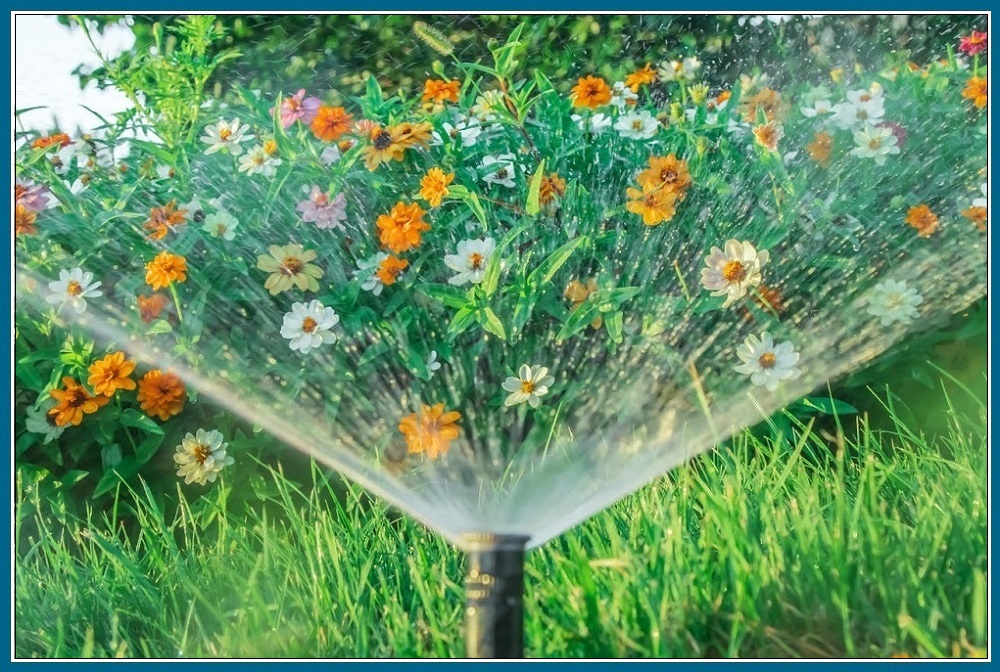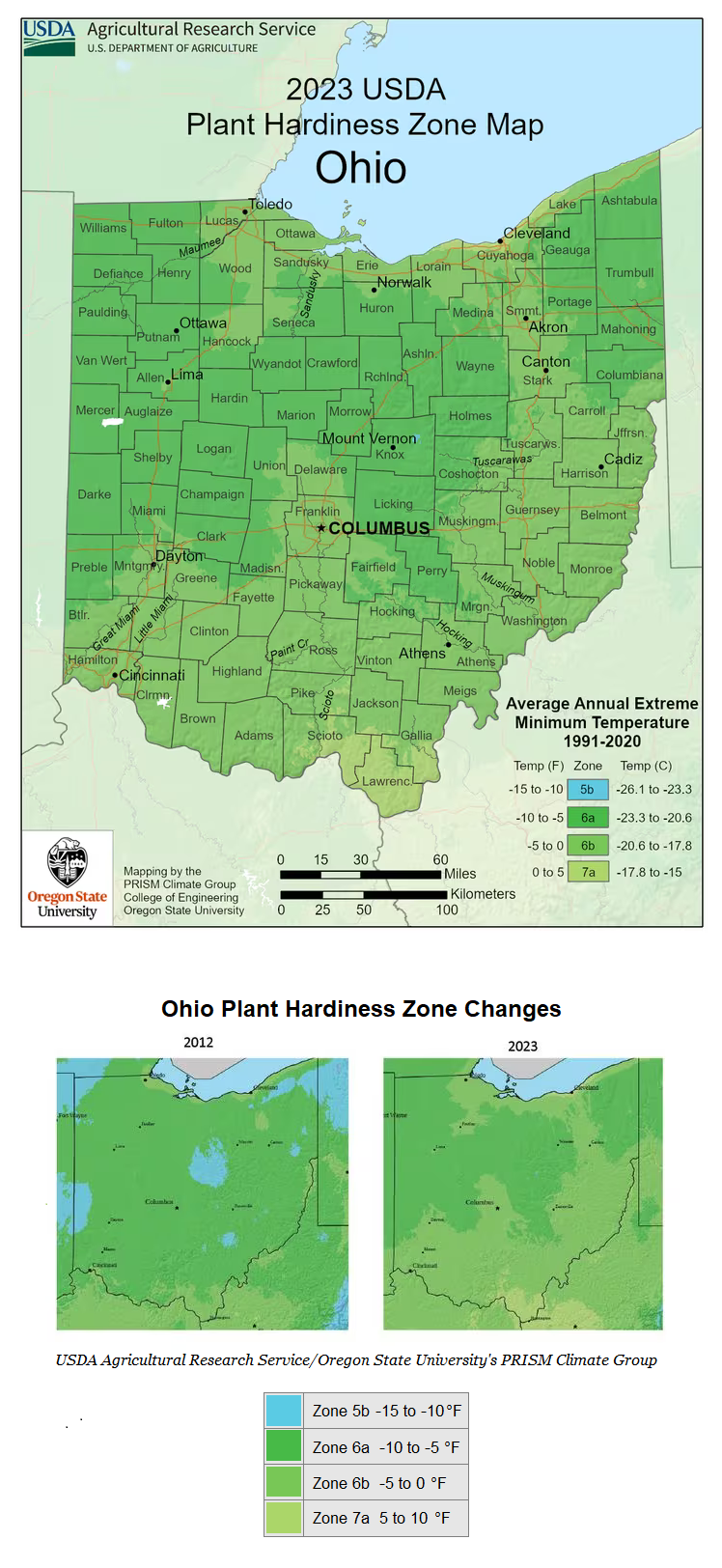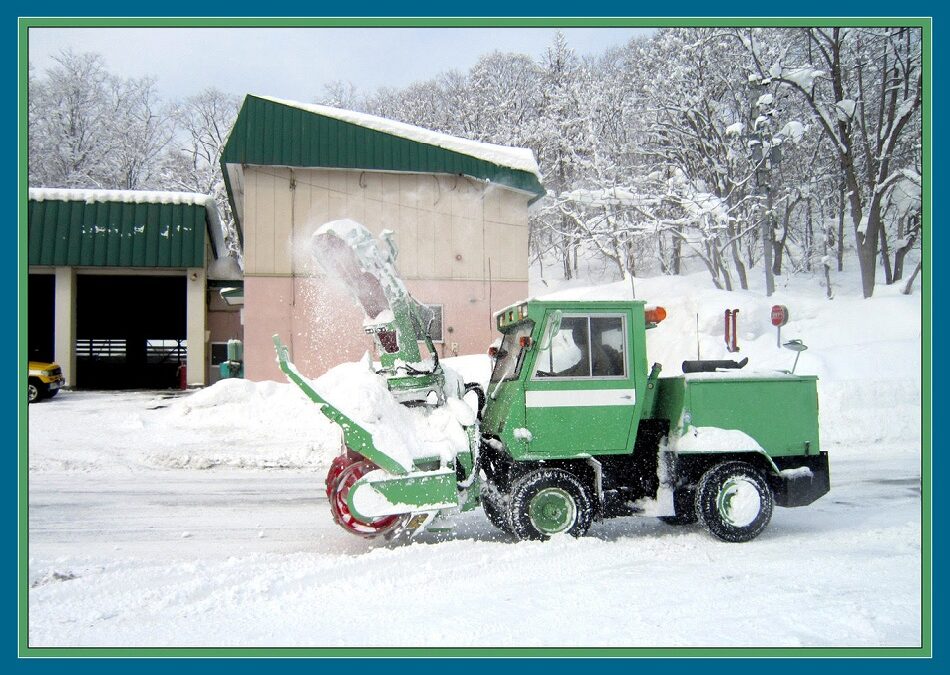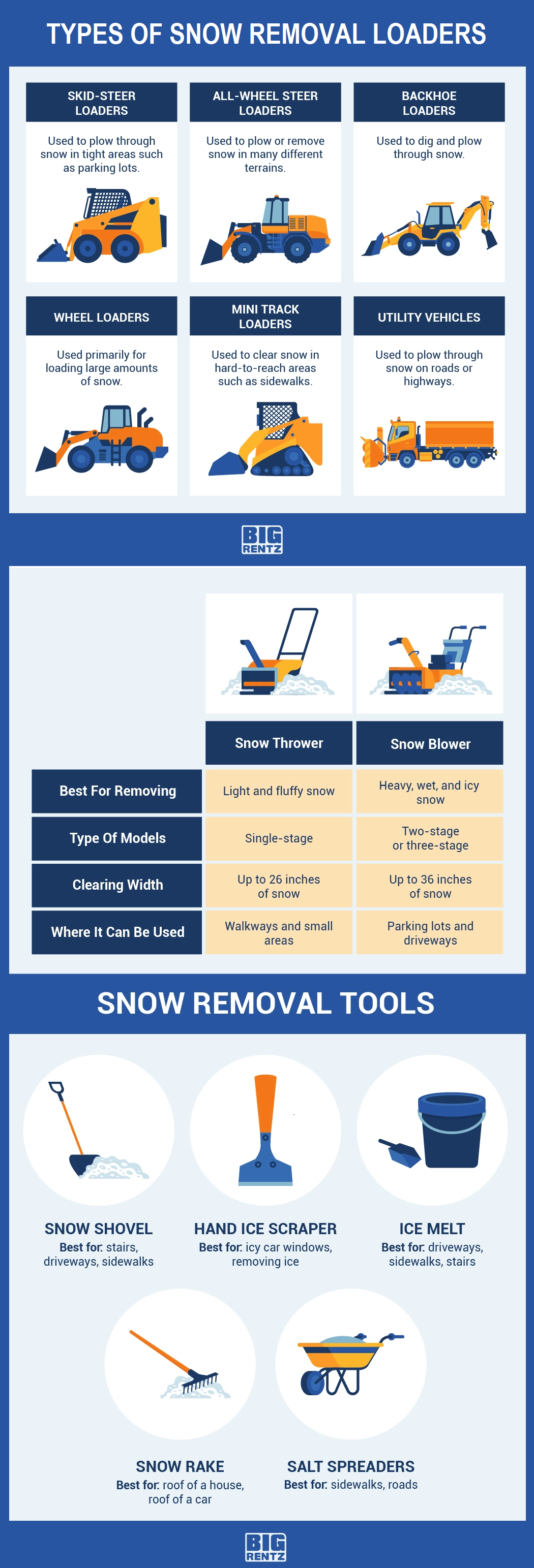
by Tom Barrett | Sep 11, 2024
Creating Vibrant Landscapes
from the Inside Out
One of the challenges irrigation and landscaping professionals often face is looking at the big picture.
Many green industry contractors tend to focus on their small piece of the puzzle (i.e., completing the job quickly and inexpensively). Instead, take a more holistic approach by studying soils and plant needs – and understanding the interconnectedness between soil, plants, and water – to improve the success of your projects in the long run.
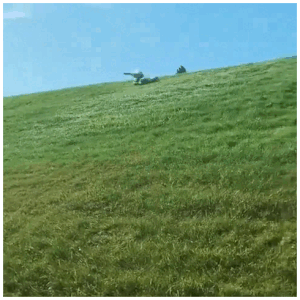
Those Slippery Slopes
Ensuring efficient irrigation for sloped terrain can be challenging. The experts at Rain Bird offer the following tips:
#1. Choose an irrigation timer with at least four start times per program to reduce run-off. Determine when run-off occurs at each station. Divide the runtime needed to meet plant water requirements by this factor.
#2. Use master valves and flow sensors as an insurance policy.
#3. Compensate for the slope by adjusting the distance between lateral lines. On a 2:1 slope, the sprinkler should throw about 80% of its radius above the head and 120% below the head.
#4. Space lateral lines across–rather than with–the slope.
#5. Install matched precipitation rate (MPR) nozzles and check valves to reduce the potential for soil erosion.
Source: Rain Bird
For instance, efficient irrigation goes beyond mere hydration. It’s about knowing plants’ unique requirements and creating an environment where they can thrive. Considering soil type, terrain slope (see sidebar), climate conditions, and plant diversity can help irrigation professionals unlock the true potential of these systems as a tool for landscape vitality and sustainability.
The Good Earth
Soils must be alive and active to produce lush landscapes. Unhealthy soils block air from reaching beneficial organisms and microorganisms. If these organisms die, the soils die, resulting in shallow root systems where fungus and mold can run rampant.
Improving the soil environment for microorganisms that attach themselves to the root systems to care for the plants will produce a much better result. Deeper root systems require less water, pest management, and nutritional development.
BIG-PICTURE TIPS:
- Test the customer’s soil. If your company does not provide soil-testing services, contact one of the following Ohio labs:
- Enhance your customer’s soil health through composting and organic-based soil amendments.
- Use integrated pest management practices to maintain a vibrant ecosystem beneath the surface.
- Employ hydrozoning practices to optimize irrigation efficiency and resource allocation.
–Article Continues Below–

Know Your Grasses
Determining which type of grass seed or sod to use in a customer’s landscape requires more than just an understanding of warm-season vs. cool-season grasses. (See sidebar, “Cool-Season Lawn Grasses.”) Just because a grass species will survive in a particular region doesn’t necessarily make it the best choice.
In addition, homeowners’ associations often have rules specifying which grass species may be planted, so check with them before seeding or sodding.
Cool-Season Lawn Grasses
In Ohio, cool-season grasses are recommended. Here’s a breakdown of the differences between each:
Kentucky Bluegrass: Particularly winter hardy, susceptible to heat and drought, medium-to-fine texture, soft underfoot
Tall Fescue: Heat and drought tolerant, low maintenance, deep roots, medium texture
Fine Fescue: Tolerates shade better than other cool-season turfgrasses, fine-bladed texture, low maintenance, well-adapted to most Ohio growing conditions
Rye Grass: Quick to establish, fine-bladed texture, shallow roots
The various cultivar characteristics within a specific grass species further cloud the issue. Differences between cultivars within a species can be dramatic and significantly impact a landscape project’s success. The Ohio State University Extension recommends blending two to four cultivars within the species to improve disease and insect resistance.
BIG-PICTURE TIPS:
- Always consider soil type, slope, and intended use before selecting seed or sod.
- Contact local sod farms to learn which grass varieties consistently thrive in your climate zone.
- Expert advice is also available from the master gardeners and turfgrass researchers at your local extension office.
- Ensure the seed you select has been certified for purity by the Ohio Seed Improvement Association.
Putting It All Together
To ensure you’re looking at the big picture, analyze your customer’s soil, slope, and plants before ever considering water in your irrigation system design. The first questions to ask are:
- What plants are being grown?
- Where are they located within the landscape?
- What soil type will they be grown in?
- What is the sun exposure?
Once you have the answers to these questions, you’ll be ready to begin designing an efficient irrigation system. A holistic plant-soil-slope-water approach promotes sustainable practices that transform outdoor spaces into vibrant sanctuaries of beauty and life.
Mark Your Calendars for
Equip Expo 2024!
October 15-18 in Louisville, Kentucky
 Equip Expo features 1,000 exhibits and hundreds of educational opportunities for green industry professionals.
Equip Expo features 1,000 exhibits and hundreds of educational opportunities for green industry professionals.
This year’s keynote speaker is Kevin O’Connor, host of the Emmy Award-winning series “This Old House.” There’ll be music by Trace Adkins, happy hour with The Crashers, and so much more!
Register early to save!

Sources:
Featured Images: Adobe, Licenses Granted
Irrigation & Lighting
Ohio State University Extension
Everfilt

by Tom Barrett | Aug 7, 2024
Test Your Knowledge With
Our Backflow Quiz
National Backflow Prevention Day is observed every year on August 16.
The day is dedicated to public education on the critical need for backflow prevention and cross-connection control. It’s also a time to recognize the professionals who ensure our available water supply remains contaminant-free. (If you install or inspect backflow preventers on irrigation systems, that means you!)
But how much do you really know about backflow prevention? Take our quiz and find out. (Answers are below, but no fair peeking!)
#1. One of the first documented backflow incidents occurred at the 1933 Chicago World’s Fair when the water supply at two hotels was tainted with amoebic dysentery.
How many people died because of that incident?
 A. Almost 50
A. Almost 50
B. About 100
C. More than 200
D. Every fair visitor
E. No one died
#2. When did water purveyors first become legally responsible for the quality of drinking water?
A. In 1934, right after the World’s Fair incident.
B. In 1945, when the first Uniform Plumbing Code was created
C. In 1974, with the passage of the Safe Drinking Water Act
D. In 1970, when the Environmental Protection Agency was established
E. They’ve always been legally accountable for water quality.
#3. Which of the following is the most common household source of cross-connection contamination?
A. Toilets
B. Washing machines
C. Fire sprinkler systems
D. Exterior taps and hoses
E. Clogged drains
#4. Which of the following backflow incidents occurred in Ohio?
A. In 1997, backflow from a fire hydrant tainted the tap water of 40,000 households with 60 gallons of firefighting foam.
B. In 2015, E. coli contaminated the entire water supply of a large U.S. city because a single homeowner failed to install a backflow preventer on his irrigation system.
C. In 1970, wine backflowed from a distilling tank into a large city’s water mains and out of the faucets of nearby homeowners.
D. In 1991, an improperly installed AVB on a residential irrigation system caused rust, debris and parasitic worms to flow into the water supply of a small U.S. city.
E. In 1996, about 50,000 gallons of reclaimed water backflowed into a large city’s potable water supply after improper installation of a residential irrigation system.
#5. In 1898, a water utility was penalized for the first time because of contaminated water. How much was the fine?
 A. $500
A. $500
B. $10,000
C. $5,000
D. $15,000
E. No fine, but the utility was shut down.
#6. Who can be held accountable for installing the wrong type of backflow preventer on an irrigation system?
A. Water purveyor
B. Inspector
C. Customer
D. Contractor
E. A, C and D
Answers
#1. Answer: B. Nearly 100 deaths and over 1,700 documented cases of illness are attributed to the incident, which spread across 206 U.S. cities. (Because the incubation period for Amoebic Dysentery is 12-30 days, the sickness was not discovered until the visitors had returned to their homes.) It was one of the deadliest backflow events in history. Ironically, the fair’s theme that year was “A Century of Progress.”
#2. Answer: C. While public health officials have been concerned about water quality and backflow prevention since the turn of the 20th century, it wasn’t until the passage of the Safe Drinking Water Act in 1974 that Congress took action to safeguard human health from contaminants in drinking water.
#3. Answer: D. According to Contractor magazine, exterior taps and garden hoses are the most common source of backflow in the U.S.
#4. Answer C. The wine backflow incident occurred in December 1970 in Cincinnati. (Sort of brings a whole new meaning to “wine on tap”!) The fire hydrant incident occurred in Charlotte, NC; the E. coli affair happened in Corpus Christi, TX; the worms flowed in Southgate, MI; and the reclaimed water event occurred in Tampa-St. Petersburg, FL.
#5. Answer: C. The utility was fined $5,000. Today, a federal court can assess up to $15,000 per day as a penalty for maintaining a hazardous connection.
#6. Answer: E. The water purveyor is responsible for water quality to the last meter connection. Water customers are ultimately responsible for properly maintaining their irrigation systems. And, of course, the contractor is responsible for ensuring the work is done properly. The backflow inspector is only responsible for those devices he has inspected and certified as safe. (Okay, so it was a trick question.)
Sources:
Featured Image: Adobe, License Granted
American Backflow Prevention Association
Chicago Backflow Inc.
Study Stack
Backflow Solutions Inc.
University of Florida

by Tom Barrett | Jul 10, 2024
Best Practices for Keeping
Nature’s Bloodsuckers at Bay
It’s July in Ohio, and that means mosquito season will soon reach its peak.
As a green industry professional, you can help reduce mosquito populations in your customers’ landscapes.
More Than Just a Nuisance
According to the CDC, West Nile virus (WNV) is the most common mosquito-borne disease in the continental United States. Around 2,205 cases are reported each year. Unfortunately, there is currently no treatment or vaccine for the disease. Although 80% of people infected are asymptomatic, 20% experience fever and flu-like symptoms. One percent of those will become disabled or die.
 The mosquito responsible for WNV is found throughout Ohio, but primarily in the northern and western parts of the state. About 58 human cases of the virus are reported each year in Ohio. However, epidemics can flare up under certain environmental conditions, such as the 441 cases in 2002 and 122 cases in 2012.
The mosquito responsible for WNV is found throughout Ohio, but primarily in the northern and western parts of the state. About 58 human cases of the virus are reported each year in Ohio. However, epidemics can flare up under certain environmental conditions, such as the 441 cases in 2002 and 122 cases in 2012.
Another mosquito-borne disease that affects Ohioans is the La Crosse virus (LACV). LACV is endemic in Ohio, where more human cases have been reported than any other state (about 20 per year).
The aggressive mosquito that carries LACV is a daytime biter commonly found in wooded areas, mainly in the state’s eastern and southern forests. LACV can cause swelling of the brain (encephalitis) and usually affects young people under the age of 16.
Breeding Ground
Mosquitoes breed in standing water. Any water that remains stagnant for more than a few days allows mosquito larvae to develop, particularly where debris serves as a food source. (Did you know that some mosquito species can breed in containers as small as a bottle cap?!)
Here’s what you can do:
 Bug Off!
Bug Off!
Certain plants possess active mosquito-repelling properties. Encourage your customers to incorporate some of these plants into their residential landscapes:
- Mint
- Bee Balm
- Allium
- American Beautyberry
- Catnip
- Marigold
- Fennel
- Basil
- Lavender
- Thyme
- Lemon Balm
- Sage
Source: The Spruce
- When designing a landscape, remember that certain soil types and natural terrain depressions can cause water to pool quickly.
- Conduct a full property inspection for potential pooling areas every time you visit a customer’s outdoor space. Drainage areas blocked by tree limbs, leaves, or rocks can result in stagnant water.
- If you observe any standing water, work with your customer to ensure the container (birdbath, planter, tire swing, pool cover, etc.) is emptied every three to five days, and the sides are scraped to dislodge mosquito eggs.
- Plug any hollow stumps or tree holes that hold water. Remind customers to drill holes in swings and other objects for drainage.
- Keep grass and shrubbery well-trimmed and repair leaky irrigation or drainage pipes.
Mosquito Control
Mosquito control that treats both young and adult mosquitoes can further reduce the pesky populations.
- The professionals at Site One recommend spraying LESCO Mosquito-Free Insecticide around the outdoor living space. Other control methods include traps and repellents, many of which are organic and bio-friendly.
- For areas with unavoidable standing water — such as water gardens — apply pet-safe Mosquito Dunks.
- Advise your customers about bio-friendly insecticides and mosquito repellents, such as NatureShield® and Mosquito Magician. These products will not harm birds or pollinators, and they can be applied directly through the homeowner’s irrigation system.
Sources:
Featured Image: Adobe, License Granted
Irrigation & Lighting
Ohio Dept. of Health
SiteOne

by Tom Barrett | Jun 5, 2024
Designing a Cohesive
Irrigation and Lighting System
Whether for convenience, safety, utility, aesthetics, or any combination thereof, irrigation and outdoor lighting work together like a hand-in-glove.
When homeowners understand the synergy between landscape lighting and irrigation, they can transform their outdoor spaces into harmonized havens of beauty and efficiency. As Smart Irrigation Month approaches (see sidebar, “We Are Smart Irrigation”), let’s look at how combining these two essential elements can create a seamless and stunning residential landscape.
Lighting and Irrigation Synergy
“We Are Smart Irrigation”
The Smart Irrigation Month 2024 theme is “We Are Smart Irrigation.”
It’s time for irrigation professionals to raise awareness about how smart irrigation products, technologies, and practices positively impact our communities.
Here’s how you can help:
- Promote Smart Irrigation Month on social media.
- Add the Smart Irrigation Month logo to marketing and business materials.
- Submit a Smart Irrigation Month press release to local media.
- Petition your city or state government officials to proclaim July as Smart Irrigation Month.
By helping customers understand the importance of water conservation and sustainability, we can make a difference.
A coordinated lighting and irrigation plan can simplify installation and maintenance. Planning and installing these systems concurrently creates a more cohesive design. For example, when lighting is strategically placed to illuminate sprinkler heads, they become a feature rather than an eyesore. Similarly, sprinkler systems can be planned to avoid water damage to lighting fixtures. An integrated approach looks better and extends the longevity of both systems.
When combining lighting and sprinkler systems, aesthetics are as important as practicality. From an aesthetics standpoint, proper lighting can enhance water features such as fountains or ponds, making them the centerpiece of a nighttime landscape. For practical purposes, utilizing weather-resistant or waterproof light fixtures will allow the illumination system to withstand exposure to moisture and changing weather conditions.
You’ll want to create a design that complements the overall aesthetic of the homeowner’s outdoor space while ensuring it’s compatible with the functional requirements of both systems.
The following table identifies the technical similarities between outdoor lighting and irrigation systems:

Source: Brilliance LED
Selling It to the Customer
One of the biggest mistakes a contractor can make is simply dropping off a manufacturer’s catalog and asking the customer to “pick out what you like, and I’ll install it.”
Customers need guidance. In your eagerness to close the sale, don’t forget to ask, “Why?” Neglecting to ask customers what they hope to accomplish can lead to unacceptable results, regardless of how smooth the installation may be.
Did You Know…
In 2022, Irrigation & Green Industry, the Irrigation Association’s monthly magazine, became Irrigation & Lighting. While irrigation is the IA’s core competency, lighting is a closely aligned industry. Expanding the publication’s focus was a natural evolution.
When you meet with customers, carry a notepad and keep them talking until you clearly understand their lifestyle and how they plan to use their outdoor spaces. This effort alone will set you apart from the competition.
Also, don’t hesitate to consult your irrigation or lighting manufacturer for additional design expertise and product guidance.
System(s) Maintenance
Encourage your customers to schedule regular maintenance for both irrigation and lighting systems. This will help them avoid electrical problems, corroded fixtures, clogged nozzles, and broken pipes while keeping these systems in optimal condition.
Because the outdoor environment is continually changing, periodic adjustments and updates may be necessary to adapt to evolving landscapes and weather patterns. Routine maintenance will help maintain the beauty and functionality of your customer’s outdoor space.
Also, stay abreast of the newest trends and technologies so you can help your customers make informed decisions when updating or installing their lighting and sprinkler systems.
Final Thoughts
Combining landscape lighting and irrigation system design is an intelligent approach to creating an attractive and efficient outdoor space. By understanding and integrating these systems, your customers can enjoy a beautifully illuminated and well-maintained residential landscape that enhances their property value and quality of life.
Sources:
Featured Image: Adobe, License Granted
Brilliance LED
American National Co.
Irrigation Association

by Tom Barrett | May 8, 2024
Tips for Navigating a
Tight Labor Market
What do recruiting and marketing have in common? Just about everything!
In the highly competitive labor market of 2024, recruiting is marketing. More than ever, attracting and hiring the best talent requires marketing expertise, especially in the green industry.
2024 Labor Market Snapshot
According to the U.S. Chamber of Commerce, the statistics are daunting. Right now, there are 9.5 million job openings in the U.S., but only 6.5 million workers available to fill them.

Ohio’s Labor Shortage
As of February 2024, Ohio has 62 available workers for every 100 open jobs. Here’s the data:
Job Openings: 314,000
Unemployed Workers: 195,642
Labor Force Participation Rate: 62.1%
Unemployment Rate: 3.4%
Quit Rate: 2.4%
Hiring Rate (all payroll additions as a percentage of total employment): 3.4%
The number of Ohio workers employed in the landscaping industry dropped nearly ten percent between May 2019 and May 2023.
Source: U.S. Chamber of Commerce
Even if every unemployed American found a job, there would still be nearly 2.4 million unfilled positions. That’s because the overall share of the U.S. working population has dropped since the pandemic. If our current employment rate was the same as in February 2020, there would be two million more Americans available to fill those open positions.
This data only confirms what employers already know: hiring is a struggle right now. But by applying strategies from the marketer’s playbook your company can still build a successful irrigation and landscaping team.
#1. Know Your Product and Target Audience
Determine exactly what your products are. That is, which jobs are you currently seeking to fill? This is where workforce planning comes in. You must understand the composition of your current workforce and identify any skill gaps. You’ll also want to identify the most high-potential individuals among current staff who may be trained to fill these gaps. Finally, to keep your business growing, you’ll need to determine what kind of workers your company will need in the future.
Your target audience is the pool of job candidates with the required skills. Making your available jobs appealing to them requires intentionality and strategy – just like the marketing of any product.
#2. Craft Your Message
When crafting your message, steer clear from a dry description of duties. Instead, use marketing tactics to create a customized missive that will make your available position stand out.
Your message must directly answer the candidate’s main question: “What’s in it for me?” An enticing proposition will include details about skills that can be learned on the job, interesting projects that would challenge them, a description of the company culture, and expected compensation and benefits.
Enlist the help of your marketing department to create more compelling job postings. Tap current employees for content — such as testimonials, videos, and day-in-the life insights — to further engage job seekers by showcasing what it’s really like to work for your company.
Irrigation and landscaping companies must promote the wide variety of fulfilling careers available in the green industry. Make sure your message includes the fact that creative, logistical, horticultural, and technological skills are in demand right now.
–Article Continues Below–

#3. Use Multiple Channels
You’ll want to promote your job openings via multiple channels. In addition to online advertising and careers sites, leveraging social media is crucial if you want to attract the best talent quickly. Job seekers often peruse Linkedin, Facebook, X (formerly Twitter) and Instagram before applying for employment. Using these platforms to build awareness of your company is critical to converting passive candidates into applicants.
Reach deep into your target audience by suggesting your current staff members share job openings on their personal social media pages.
#4. Provide a Positive Experience
Court prospective candidates by treating them like potential customers. Sell your product by detailing what you can do for them.
You want job candidates to have an authentic and positive experience. Throughout the recruiting process, the candidate/employer relationship is paramount. Instead of just trying to fill an opening, take this opportunity to learn more about the individual and determine if your job is a good fit.
Even if it’s not, have a system in place to capture the candidate’s information so it may available for future opportunities. Companies who provide candidates with a positive are generally rewarded with higher acceptance rates.
Applying these basic marketing principles to your company’s recruiting efforts will enable you to attract, engage, cultivate, and hire the best talent for your irrigation and landscaping jobs.
Sources:
Featured Image: Adobe, License Granted
U.S. Chamber of Commerce
Irrigation & Lighting
PageUp
Green Industry Pros

by Tom Barrett | Apr 10, 2024
Expanding Your Inventory to
Accommodate Warmer Regions
The USDA’s new Plant Hardiness Zone Map (PHZM) indicates that southern environmental conditions are creeping north.
Many Ohioans may now be able to enjoy plants that would not have thrived previously, while still retaining those that require cooler temperatures. Some areas of the state could also start to see an influx in pollinators.
As a green industry contractor, what changes (if any) should you make to your plant inventory to accommodate these zone changes? Let’s examine some of the most popular flora for each of Ohio’s planting zones.
Zone 5b
There is only one remaining patch of Zone 5b across the state. Located in northeastern Knox County, this zone has a minimum average temperature between -4 and -14 degrees Fahrenheit. Popular plants and perennials that thrive in Zone 5 include:

Ohio’s Future Landscape
Long-term climate change models indicate that, by 2030, Ohio summers may become similar to current summer weather conditions in southwestern Kentucky. And Ohio winters will likely mimic current winter conditions in southern Virginia.
By 2095, summer weather in Ohio will be similar to that currently experienced in Arkansas, with winters in Ohio similar to those in southern North Carolina. Depending on the accuracy of these models, the descendants of today’s Ohioans will be cultivating very different plants in their landscapes.
Source: The Columbus Dispatch
- Apple trees
- Lilacs
- Dogwoods
- Lilies
- Hostas
- Hollyhock
- Coneflower
- Lavender
- Peonies
Zones 6a and 6b
Ohio still falls almost entirely within Zone 6. Most of the central region and areas to the northeast and northwest remain in Zone 6a.
However, Zone 6b is significantly larger now, encompassing much of southern Ohio. Average minimum temperatures in this warmer zone range from -5 to zero.
Zone 6 can be challenging, as it is vulnerable to extremes at both ends of the thermometer. For example, using Zone 5 plants in Zone 6b is not always advisable. While they’ll be exceptionally winter-hardy, they may not survive the summer heat.
Popular Ohio plants for Zones 6a and 6b include:
- Shasta daisies
- Sedge
- Roses
- Butterfly bush
- Hydrangea
- Muhly grass
- Flowering cherry trees
- Crape myrtle
- Japanese maple
Zone 7a
Ohio’s newest plant hardiness region, Zone 7a, includes a narrow swath of Greater Cleveland just inland from Lake Erie and the southernmost tip of the state.
Landscaping companies located within this zone would be wise to offer their customers a variety of flora that will now thrive in the state’s warmest areas. Here are some species you’ll want to consider:
- White giant and panache calla lily
- Angels’ earrings cascading fuchsia
- Basjoo banana tree
- Spineless prickly pear
- Jack’s giant, coal miner, and black beauty elephant ear
- Morning sun and snowcap cast iron plants
- Blue oak, Teresa’s Texas, Jerusalem, and lipstick Texas sage
- Hypearl compact red St. John’s wort
- Eco Easter Japanese evergreen iris
- White-top star sedge
- Elizabeth Lawrence butcher’s broom
- Chusan hardy windmill palm
- Wright’s Texas firecracker
- Variegated glorious soapwort
- Gemmiferous spikemoss
–Article Continues Below–

Beyond Plant Hardiness Zones
Of course, plant hardiness is only one factor to consider when designing a landscape. Microclimate variables, such as drainage and sun exposure, can shift a landscaping area more than half a zone.
It’s also important to remember that the new Plant Hardiness Zone Map is based on the AVERAGE annual minimum winter temperature from 1991 to 2020. Dramatic temperature fluctuations will still occur. Other environmental factors, such as chill hours (number of hours each year below 45 degrees Fahrenheit), also matter.
So, it’s best to regard the new PHZM as a means of assessing future risk—just one instrument in the green industry professional’s toolbox.
Sources:
Featured Image: Adobe, License Granted
Plant Delights
WVXU
Cincinnati Enquirer

by Tom Barrett | Mar 13, 2024
Shedding Light on
Springtime Landscapes
At last, spring is in the air!
No doubt, your customers are eager to once again enjoy their outdoor living spaces. Landscape lighting can have a tangible impact, elevating any yard into an inviting spot for enjoying spring evenings. Let’s look at some of the hottest outdoor lighting trends for spring.
String Lighting
String lights are an easy way for customers to add a little something extra to their spring landscapes. They’re easy to install around patios and porches and can even be used to cover railings for a fun accent illumination.
Tree trunks and main branches can be covered with string lights to outline the tree’s shape while casting a luminous glow on the landscape below.

Springtime Tasks
Here are three tasks your customers should add to their springtime to-do list:
- Check existing outdoor fixtures to ensure they cast enough light for guests to see up the driveway and along walkways.
- Check patio lighting to confirm it provides sufficient illumination once the sun goes down.
- Check outdoor electrical outlets; consider having additional weatherproof outlets installed.
Problems such as exposed wiring or broken fixtures are best left to the professionals. Offer your customers the option of a complete landscape lighting audit before the busy summer season.
Source: Wolfers
Lanterns
Portable outdoor lanterns are another great way to incorporate lighting into the landscape. These fixtures are available in various designs and sizes and can accommodate bright LED lights for security or dim candles for a more romantic ambiance.
Hanging electric lanterns are ideal for lining a garden walkway or brightening up support beams on a front porch. Install posts at even intervals, allowing the lanterns to hover above mature foliage or peek out between plantings.
Orbs
If your customers want a modern look, you can’t go wrong with orb lighting. A spherical alternative to traditional stake lighting, orbs provide visual interest and work particularly well in rock gardens or xeriscapes. They can be hung together over a patio or garden or spaced individually throughout the landscape.
Solar orbs are particularly popular right now, but they have some drawbacks. Because they rely on rechargeable solar batteries, they must be installed in areas with sufficient sunlight. (They won’t perform to their maximum potential during Ohio’s rainy spring days and nights.) Also, a solar fixture’s higher “up-front” cost can deter some customers.
Planters
Outdoor planter lighting provides a captivating display, but proper installation and positioning are fundamental to maximizing its impact.
Planters with built-in lighting fixtures offer an elegant and streamlined look while effortlessly illuminating colorful spring flowers and plants. Embedding small lights directly in the soil is another option. Alternatively, mini solar lights can be attached securely to the planters.
The aim is to create balanced illumination that highlights the plants’ beauty without overpowering the surroundings.
–Article Continues Below–

Water Features
Whether moving or still, water is always a prime candidate for outdoor lighting. Uplighting of a waterfall or fountain using a halogen underwater light is one effective option.
Another popular water feature is a recycling urn-shaped fountain in which the water trickles down the sides onto a cobblestone reservoir. By illuminating the trickling stream with a small underwater 20-watt bulb and a frosted lens, you can produce a subtle sparkle for a diffused effect.
Electric Fire Pits
Customers looking for both warmth and ambiance on cool spring evenings should consider an electric fire pit. These fire pits offer all the benefits of the traditional version without the mess and inconvenience. Some designs can also be converted to use natural gas or propane.
Selling It
A lighting demonstration kit can help your customers fully understand the value of a well-designed and properly installed landscape lighting system. (These kits are available from most lighting distributors.) Here are a few more selling tips:
- Always install the lighting during daylight hours. You can then return in the evening to showcase the setup to your customers.
- Choose a specific illumination area, highlighting a few focal points.
- Perform a test run, adjusting the lights before presenting to your customers. Turn off the lights before bringing them outside. Then, turn on all the lights simultaneously for the most dramatic effect.
- Engage your clients regarding the system’s zoning, dimming, and color capabilities. Then, install the app on their mobile devices, including pre-set themes where appropriate.
Sources:
Featured Image: Adobe, License Granted
Warehouse-Lighting.com
The Spruce
NightVision
Site One

by Tom Barrett | Feb 14, 2024
Companies With Diverse Work Teams
Make More Money
We live and work in a global village where diversity abounds.
As a green industry contractor, if your work team does not include a variety of racial, cultural, and age groups, your profits could suffer. At the very least, your business is missing a key ingredient for growth.
Just the Facts
Consider some statistics. Boston Consulting Group recently found that companies with a diverse workforce make more money than those with staff uniformity. In addition, companies with diverse management teams produce almost 20% more revenue than their homogeneous counterparts.
In the words of global industry analyst Josh Bersin, “Workplace diversity leads to innovation. Inclusive companies are 1.7 times more likely to be innovation leaders in their market.” If your irrigation business struggles with a particular issue, hiring a more diverse leadership team could be your answer.

The Multi-Generational Workforce
The U.S. labor force has become increasingly multi-generational, with 50-year experts working alongside young recruits fresh out of school.
Here are some of the benefits of employing staff from various age groups:
1. Knowledge Sharing: Older employees offer wisdom and institutional knowledge, while younger staff contribute fresh ideas and technological expertise.
2. Improved Creativity: The unique life experiences of employees from different generations can lead to creative solutions.
3. Adaptability: A multi-generational workforce combines the wisdom of experience with the receptivity to change offered by younger generations, helping companies navigate evolving markets.
4. Better Understanding of Customers: A multi-generational workforce helps businesses better understand their customers’ preferences and needs across various generations, resulting in greater customer satisfaction and loyalty.
5. Employee Engagement and Retention: A multi-generational workforce that fosters a sense of inclusion boosts employee engagement, job satisfaction, and retention.
Source: The Power of 10
Online decision-making platform Cloverpop revealed in a two-year study that inclusive work teams make better decisions, outperforming individual decision-makers about 87% of the time.
What’s more, your company can attract more job applicants if it reflects diversity in the workplace. According to a 2020 Glassdoor survey, 76% of job seekers believe workplace inclusivity is an important factor to consider when determining employment offers.
Diversity, Equity, and Inclusion
Diversity, equity, and inclusion (DEI) is a term business leaders use to encompass all efforts to make their staff feel accepted and supported at work, regardless of race, ethnicity, gender, age, or socioeconomic background.
While you can incorporate DEI practices into many aspects of your company, most initiatives are led by Human Resources, supporting current team members and ensuring equity when hiring. For instance, DEI recruiting software is available to help employment managers overcome unconscious biases that could disrupt the hiring process and ensure that job opportunities are open to all qualified candidates.
Where to Begin
Convene a meeting with your entire company. First, introduce the topic, explain why diversity and inclusion are important, and lay the ground rules for the discussion. These may include:
- Any information shared will remain confidential.
- Everyone should actively participate in the conversation.
- Every contribution is significant.
- Everyone should listen without judgment.
Then, begin brainstorming answers to the following questions:
–Article Continues Below–
- How diverse is our overall workforce? Our leadership team?
- Can our corporate culture be viewed as biased or exclusive?
- What can we do to make our company more diverse and inclusive?
- How can we attract potential employees from a more diverse labor pool?
- How can we promote our commitment to workplace diversity?
- What challenges might we face in our efforts to become more inclusive?
After adequate discussion time and opportunity for input, gather the results of your brainstorming session and outline a clear action plan. You can then appoint a committee or designate an individual team member to serve as diversity officer to follow through on the approved plan.
Need Help?
The Society for Human Resource Management (SHRM) offers many online resources to help facilitate your company’s journey toward workplace diversity. Here are just a few:
Sources:
Featured Image: Adobe, License Granted
Irrigation & Lighting
G2
Glassdoor
Cloverpop

by Tom Barrett | Jan 10, 2024
Using New USDA Zones to
Market Your Business
The USDA’s new plant hardiness zone map (PHZM) places Ohio in warmer sectors. What will that mean for irrigation and landscape contractors?
According to the new map, the average lowest winter temperature across the country is now 2.5 degrees warmer than it was in 2012, the last time such a map was charted. Viewable in an interactive format, the 2023 hardiness zone map was created digitally, relying on detailed and more precise data than before. Map users can zoom in on specific ZIP codes and locate roads within each zone.
Ohio’s New Hardiness Zones
Like the 2012 PHZM, the new version shows Ohio falling almost entirely within Zone 6, with an average lowest winter temperature between minus 10 and zero degrees Fahrenheit. But Zone 6b now encompasses a considerably larger area than it did in the 2012 map.
Much of central Ohio, along with areas to the northeast and northwest, still lies in Zone 6a, which ranges from minus 10 to minus 5 degrees. (According to the 2023 map, the only remaining pocket of Zone 5b is in northeastern Knox County.)
The warmer Zone 6b ranges from minus 5 to zero and now includes much of southern Ohio. But it also includes a section of Northern Ohio west of Toledo and extending to Pennsylvania, which is warmed by the moderating effects of Lake Erie. As a result, Ohio’s Zone 6b is significantly larger than the 2012 map indicated.
Warmer still is Zone 7a, making its first appearance in Ohio. This zone, ranging from zero to 5 degrees, now includes a narrow swath of Greater Cleveland just inland from Lake Erie and the southernmost tip of the state.
–Article Continues Below–

Impact on Irrigation and Landscaping
Regions across the state have warmed, making them suitable for plant species that previously could not have survived there. Here are some of the ways warmer regions can impact landscape and irrigation professionals:
- Longer growing seasons and the likelihood of increased heat will compel homeowners to consider more efficient water usage and adopt more sustainable irrigation practices.
- Extended growing seasons require adjusting planting schedules and vigilantly maintaining plants during the longer summers.
- Homeowners and landscapers may choose from a broader range of plants, allowing for more diversity within a landscape.
- Landscapers must proactively monitor and manage increased pest and disease challenges caused by warmer temperatures.
Promoting Your Business Through the New PHZM

Evolution of
the PHZM
1927 – Harvard University publishes the first known U.S. map with eight climatic zones in the Manual of Cultivated Trees and Shrubs Hardy in North America.
1928 – USDA publishes a map depicting average annual minimum temperatures in 11 zones across the United States.
1938 – Harvard University publishes enhanced plant hardiness map using previously unavailable temperature data from the U.S. Weather Bureau.
1948 – Harvard University publishes a revised and updated map, incorporating new weather data.
1960 – USDA develops and publishes the first official Plant Hardiness Zone Map [PHZM], which eventually became the standard for assessing plant hardiness in the United States.
1990 – USDA publishes updated PHZM, utilizing data from about 8,000 weather stations over a 12-year period.
2012 – USDA develops the first digital PHZM, utilizing 30 years of weather data.
2023 – USDA publishes revised digital PHZM, utilizing data from 13,412 weather stations over a 30-year period.
Source: Medium
You can help your customers understand the ramifications of the new PHZM while also promoting your irrigation business. Here’s how:
Explain the Map
Familiarize customers with the PHZM. Explain to them how the local climate is changing, offering more plant diversity and longer growing seasons, but also likely requiring more efficient irrigation – not necessarily more water. Provide them with a link to the updated interactive map so they can drill down to their local area.
Offer a Variety of Options
Stay current on the newest and most efficient smart controllers and system components, and offer various options for your customers to consider. Maintaining a strong relationship with your local irrigation distributor will go a long way toward ensuring familiarity with the latest products.
Incentivize
Offer rebates or other incentives to encourage action (such as retrofitting inefficient irrigation systems with smart systems). Inform customers of any rebate programs available through WaterSense, their local water utility, or irrigation system manufacturers.
The 2023 PHZM update highlights the impacts of climate change on our local environment, presenting both new opportunities and challenges. Responding proactively to these changes can help ensure sustainable landscapes while also promoting your business as a green industry leader.
Sources:
Featured Image: Adobe, License Granted
USDA
Cleveland.com
Medium

by Tom Barrett | Nov 8, 2023
White Stuff Spells Green for
Enterprising Contractors
Irrigation and landscaping contractors in snow-prone Ohio recognize the benefits to be gained from including snow removal in their menu of services.
For instance, homeowners’ associations often seek out four-season maintenance providers. Your business will attract these larger accounts by offering snow and ice removal services. In addition, keeping your crews employed all year will help you retain your best workers.
Here are some things to consider before you branch out:
Essential Equipment
Many landscaping contractors already have access to some of the most expensive equipment needed for snow removal, such as skid steers, track and wheel loaders, and pickup trucks. But what about irrigation contractors whose services do not include general landscaping? You can still get into snow business by renting the necessary equipment. (See infographic below.)
Some essential snow attachments manufacturers recommend for skid steers and loaders include snow blades, angle or push brooms, snow blowers, snow pushers, scrapers, and buckets.
–Article Continues Below–

Snow Blades
Snow blades work hydraulically to stack snow high and cleanly, even on uneven terrain. An angled or V-shaped blade provides added versatility, since it can be used to angle and direct snow. V-blades work best in open spaces, and are most effective on hard surfaces such as pavement or concrete. But straight blades are the most popular type of blade attachment, and are often more affordable.
Snow Brooms
For lighter snowfalls, angled or push brooms are ideal for sweeping less than six inches of snow. An added benefit is that these attachments can be used year-round to remove dirt, leaves, gravel, and other debris.
Snow Blowers
A snow blower attachment is used to blow snow into a pile or dump truck with a truck-loading shoot. It can remove large amounts of heavy, wet, or icy snow in a single pass.

Ohio’s First Snowfalls
Below are some compiled statistics for the earliest snowfalls of at least one inch in Ohio’s major cities:
Columbus 1 inch, Oct. 22 (1925)
Cleveland 1.4 inches, Oct. 18 (1972)
Cincinnati 5 inches, Oct. 19 (1989)
Toledo 1 inch, Oct. 20 (1992)
Akron 2.9 inches, Oct. 20 (1952)
Dayton 4.8 inches, Oct. 19 (1989)
Youngstown 2.6 inches, Oct. 30 (1993)
Source: Weather.gov, Extreme Weather Watch
Snow Pushers
As the name implies, snow pushers are designed to push snow straight ahead; they can neither load nor lift. Pushers are ideal for clearing sidewalks, small parking lots, and driveways. Heavy snowfalls may be too much for some pushers, and wider pushers can be challenging to maneuver. Because pushers require a skid steer or loader with a lot of torque and traction, selecting a pusher attachment with the proper size and weight for your equipment and application is essential. (Bigger isn’t always better.)
Scrapers
Use a scraper attachment to remove hard-packed snow and ice. Be sure to get one with a self-sharpening cutting edge that easily slides under ice and stubborn snow.
Snow Buckets
These attachments are used to scoop and transport large volumes of light snow. Because buckets have no electric or hydraulic parts, they require minimal maintenance. During warmer months, they can be used to move wood or mulch.
Spreaders
Spreading salt or other ice-melts is another key component of any snow and ice removal system, as it protects your customers from accidents on their properties. Spreaders attach to the rear of a vehicle and disperse salt or sand at controlled flow rates and high speeds. There are also simple handheld models available for smaller areas.
Contractors can opt for a variety of ice-melts, including sodium chloride (rock salt), calcium chloride, potassium chloride, magnesium chloride, or any combination of these, depending on the outside temperature and application area. (For instance, magnesium chloride is considered the most eco- and pet-friendly.)
Of Plows and Pickups
Snow removal contractors often opt for compact equipment because pickup trucks are too cumbersome to fit into tight spaces.
However, compact equipment is more difficult to transport quickly from job to job since it requires a trailer, which is why some contractors prefer the versatility of a pickup truck with a snowplow. If your business owns a medium-duty truck, you can purchase a snow plow package from your local distributor. The system can be mounted to the frame of your existing trucks and easily removed when not in use.
Final Tips
If you’re just getting started in the snow removal business, here are a few final tips to consider:
- Use bulk spreaders whenever possible, as ice melts are cheaper when purchased in bulk.
- Take advantage of a downloadable weather app so you can make educated decisions based on current weather data.
- Consider joining an association like the Snow and Ice Management Association (SIMA), which offers an extensive library of resources to help you quickly gain the skills needed for success.
- Make sure your crews enjoy working long hours and at night. Snow removal is not for the faint of heart!
Sources:
Featured Image: Adobe, License Granted
Green Industry Pros
Irrigation & Lighting
Big Rentz
Jobber



 Equip Expo features 1,000 exhibits and hundreds of educational opportunities for green industry professionals.
Equip Expo features 1,000 exhibits and hundreds of educational opportunities for green industry professionals. 

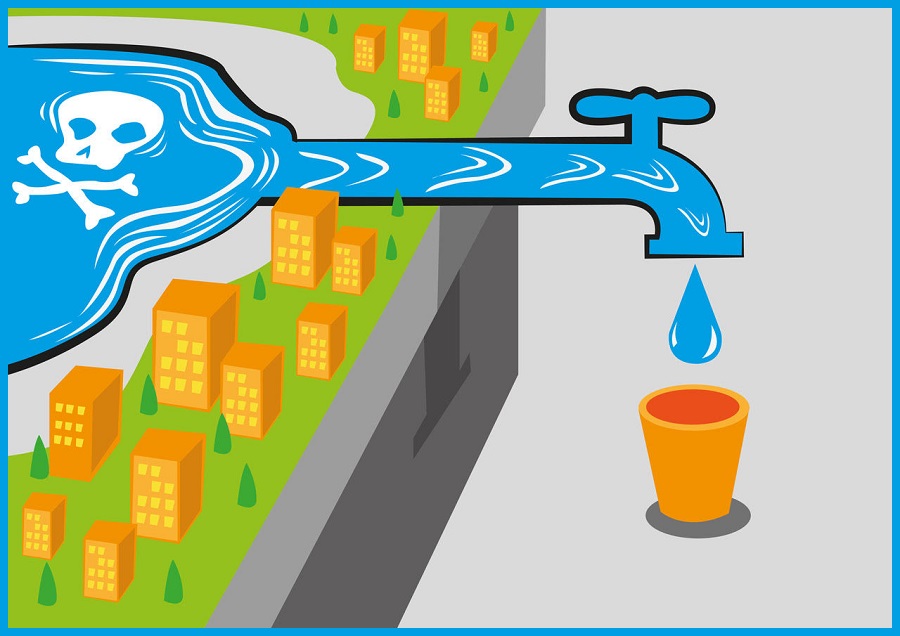
 A. Almost 50
A. Almost 50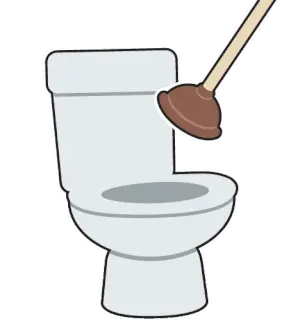
 A. $500
A. $500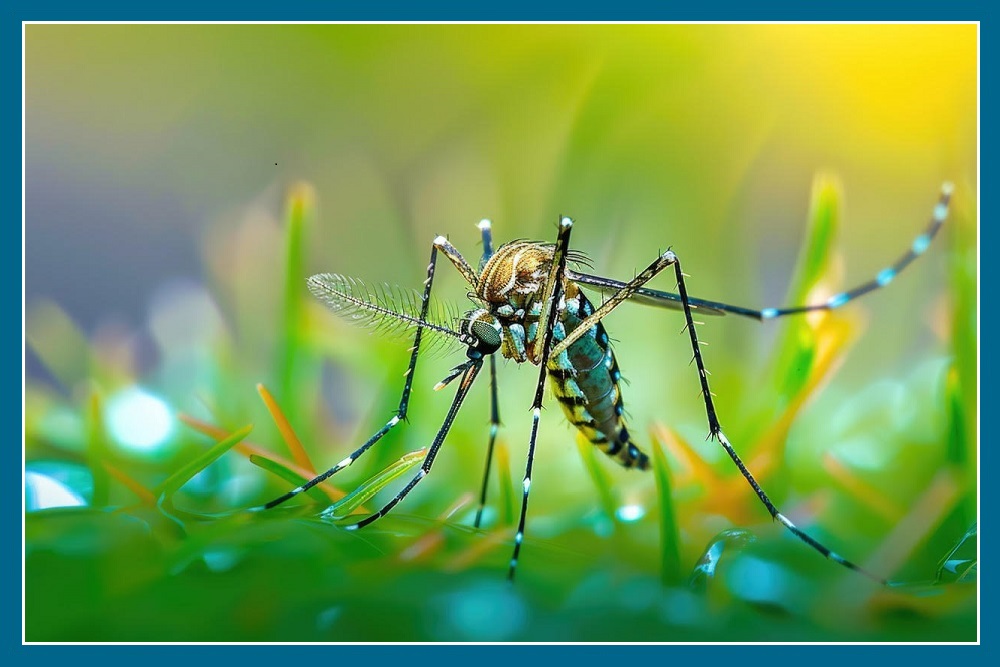
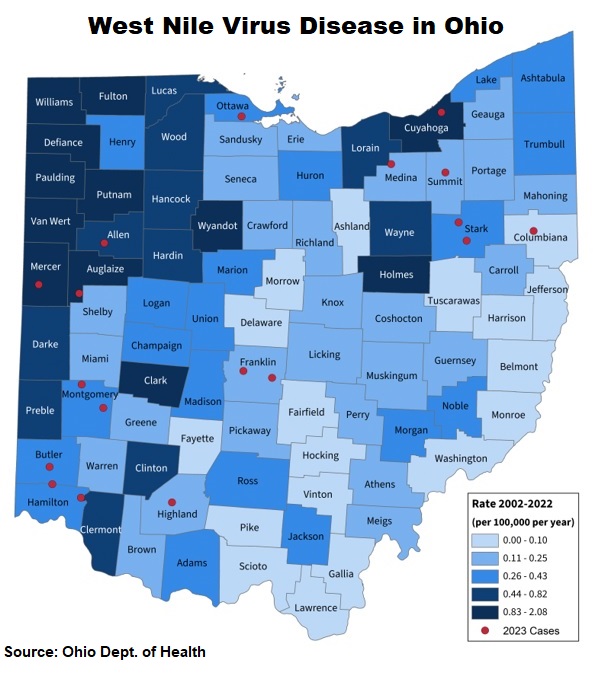
 Bug Off!
Bug Off!